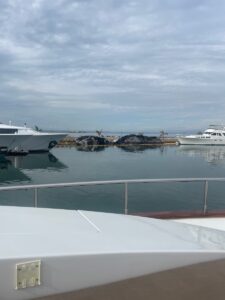New Marine Liability Act Updates: Impacts on Pleasure Craft Insurance
The recent amendments to Section 29 of Canada’s Marine Liability Act (MLA) have significantly impacted the liability limits for vessel owners and operators, particularly affecting those who own pleasure craft in Canadian waters. The statutory limits of liability for incidents involving vessels under 300 gross tonnage (GT) operating in Canadian waters were increased by 50%. Now, claims for property damage are limited to $750,000, and claims for personal injury or death are capped at $1.5 million. These changes were made to reflect inflation since the original limits were established back in 2001.
For pleasure craft owners under 300 GT, this adjustment means that the combined liability limits for serious casualties involving both property damage and personal injury or death now total $2.25 million, plus interest.
“As specialists and leaders in the pleasure craft insurance sector, it’s our duty to stay at the forefront of industry and legislative developments. Our primary focus is to ensure that our clients are comprehensively protected against liability claims, particularly for those operating higher-risk vessels. This commitment not only reflects our expertise but also our dedication to safeguarding our clients’ interests in an ever-evolving landscape.” Allicia Campbell, VP Central Canada, Safe Harbour
Insurance recommendations from Canada’s Marine Liability Act
This has led to a recommendation that Canadian boat owners should carry at least $2.5 million to $3 million in liability insurance coverage to fully respond to claims up to these new limits, including those not subject to limitation. This is a notable increase from the previously adequate liability policies of $2 million. The adjustments also account for additional costs such as interest and recoverable legal costs, which may be payable to a claimant.
Budget implementation act
The changes to the Marine Liability Act were referenced in Canada’s 2023 Budget under Bill C-47, known as the Budget Implementation Act. These legislative changes are part of a broader effort under Canada’s Oceans Protection Plan to modernize marine protection and safety. In addition to increasing liability limits, the amendments aim to strengthen marine safety, respond more effectively to marine pollution, and improve compensation for communities impacted by spills. The amendments also include provisions for faster access to port and emergency services during incidents, requirements for vessel and facility operators to report and have response plans for hazardous and noxious substance spills, and improvements in compensation for all types of harvesting impacted by spills.
For boat owners in Canada, these amendments highlight the importance of reviewing insurance needs considering the increased liability limits. Owners need to ensure their policies provide sufficient coverage for potential liabilities, taking into account the changes that reflect the government’s commitment to marine safety and environmental protection.
Rola Nasser, VP Quebec, Pacific Marine Underwriting Managers, recommends to brokers, “Pleasure craft insurance brokers must stress to their clients how crucial it is to have sufficient third-party liability coverage. This is particularly important for boat owners who engage in watersports or whose vessels are located in the United States, the Bahamas, the Caribbean, or similar regions. These areas pose a greater risk of physical injuries and liability claims, which can significantly affect the boat owner’s financial stability.”
 Resources related to Canada’s Marine Liability Act
Resources related to Canada’s Marine Liability Act
Government of Canada: Marine Liability Act
Norton Rose Fulbright: Canadian Maritime Law Limits
Department of Finance: Official Budget 2023 documents and summaries provided by the Department of Finance Canada
Whitehall Twining: Recent amendments to the limitation of liability under the marine liability act
Borden Ladner Gervais: Interest And Increases: Developments In The Law On Limits Of Liability In Canada